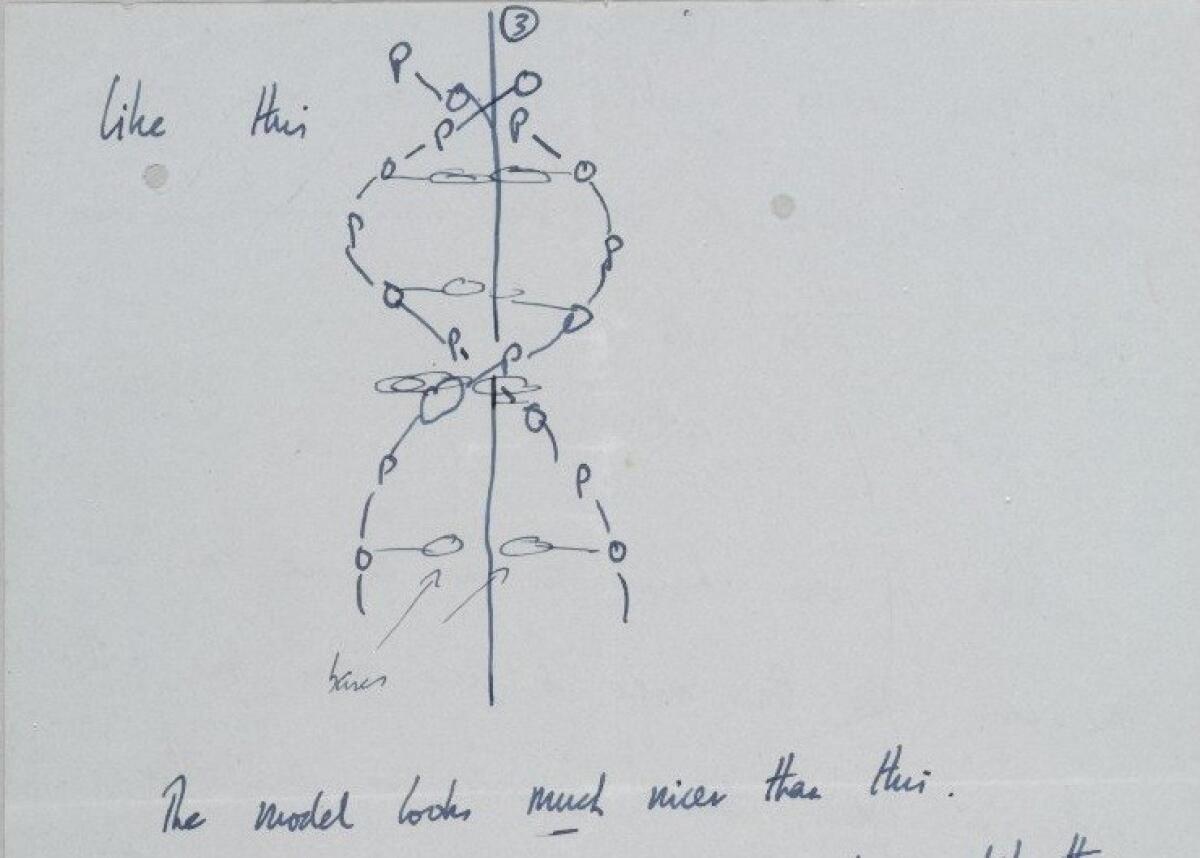Francis Crick letters in spotlight as DNA Day approaches

- Share via
As the world gears up to celebrate DNA Day on Thursday -- the anniversary of the publication of scholarly papers that explained the structure of the molecule -- the letters of Francis Crick, one of the scientists involved in the work, are in the news.
In a letter published Wednesday in the journal Nature, researchers from the Cold Spring Harbor Laboratory in New York described a letter Crick wrote in 1961 to the biologist Jacques Monod, laying out some background about the DNA discovery. It was long thought that the letter indicated that Monod was planning to nominate Crick and his colleague, James Watson, for the Nobel in physiology or medicine -- the award they won, along with Maurice Wilkins, in 1962.
But in fact, a search through archives of the Pasteur Institute in Paris showed that Monod actually nominated the scientists for the prize in chemistry instead (subscription required to read full article). “The fact that the double-helix was the subject of nominations for both prizes must have presented a dilemma for the two [Nobel] committees,” Alexander Gann and Jan Witkowski wrote.
This discovery from the academic papers isn’t the only Crick correspondence garnering headlines: On April 10, a seven-page personal letter by the scientist fetched a record $5.72 million at auction. The note, written in 1953 and mailed to Crick’s then-12-year-old son Michael, describes DNA’s double-helix structure and includes a simple sketch (shown above). “We think we have found the basic copying mechanism by which life comes from life,” Crick wrote. “You can understand that we are very excited.”
Michael Crick, now 72 and living in Seattle, said the family decided to sell the letter -- and Crick’s Nobel medal, which brought more than $2 million at a separate auction -- because those items, as well as other artifacts, had been sitting in storage collecting dust. The family donated 20% of the sales of the medal to the Francis Crick Institute in London and half of the money from the sale of the letter to the Salk Institute in La Jolla, where Crick worked for nearly 30 years.
This year’s DNA Day marks the 60th anniversary of the DNA publications. Celebrations and tributes are planned from the National Institutes of Health’s National Human Genome Research Institute, the American Society of Human Genetics and other organizations.







